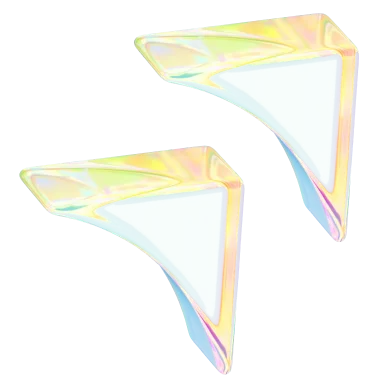Allusion Figurative Language: Definition & 5 Examples 🤓
- Writing

Learn all about allusions and how to use them, with concise definitions and examples. Enhance your understanding of this powerful literary device.
As a writer, arming yourself with as many tools as possible to improve your craft and connect with your audience is key. Allusions are an excellent way to do this, as they engage readers by adding layers of meaning, depth, and cultural references.
In this guide, we'll learn how to evoke emotion and complex ideas by understanding what allusions are, how to use them in your writing, and examining five carefully selected examples.
If you’re wondering how to integrate allusions seamlessly into your writing, this one’s for you.

What is an allusion? 🤔
What is an allusion in figurative language? Allusion’s definition in literature refers to something well-known, like an event, place, or person, without necessarily directly referencing it. You can use an allusion to give your readers a better idea about something without explaining it explicitly.
Allusions are sometimes confused with other literary devices, such as:
- Allegories: These are for communicating a theme about an obscure or complex topic using a fictional story, like Animal Farm, for example.
- Metaphors: These are similar to allegories in that they communicate an idea about something by stating the similarity between two things, for example, "He has a heart of stone" or "The word is your stage, sing your song."
Allusions: Why and when to use figurative language 📚
Allusions are great for conveying complex ideas through a single reference, which allows you to be more concise as a writer.
You can also use allusions to make your writing relevant to readers since they draw on cultural knowledge. By the same token, you can come across as an expert by using allusions referencing your industry. Allusions also allow you to evoke emotions when you use references, or tips of the hat, to other works or historical events they might know of.
Allusions are also helpful when describing a character, for example, "He was true to Atlas in the way he handled his burdens," or to personify objects using inner dialogue perhaps, like "My phone stared back at me, a silent Nietzsche-like observer, characterizing my personality, as the text of my deceit was sent."
In terms of when to use an allusion, ask yourself the following:
- Does it enhance the meaning? The allusion should make contextual sense and add weight to your point.
- Does it evoke emotion? Referencing a beloved or essential character, moment, or historical figure usually generates an emotional response in readers.
- Is the reference widely known? An allusion works only if the person or event you are referencing is known to your audience. Otherwise, it won't have any impact.
6 characteristics of allusion 6️⃣
Allusions can be used in many ways, and how the allusion is used determines the characteristics. Characteristics of allusions are often confused with types of allusion (religious, mythological, cultural, etc.), which are mainly categorized based on the source you are referencing.
To better understand allusions, here are six common characteristics.
1. Single reference ☝️
This type of allusion is used once without further explanation and depends on the reader to understand the reference. You can use this allusion to make your writing more humorous or communicate a meaningful idea. For example, "Many slasher films have been heavily inspired by our knife-wielding, mask-wearing friend."
2. Multiple references 👯
This is the opposite of a single reference allusion and makes many references (like the Scary Movie series), typically within an industry, culture, or practice. You can use this allusion when making cultural commentary, to engage your audience with a more complex reading experience or if you want to be more creative or expressive.
3. Casual allusion 🤙
This type of allusion doesn't affect a reader's understanding of your writing if they don't know the reference, but it adds value to readers who do. For example, "She gave him a Mona Lisa smile as he spoke, not wanting to reveal her thoughts." Even if the reader doesn't know what the Mona Lisa is, the sentence's meaning is still understood.
4. Corrective allusion 🔃
Corrective allusions use a reference but highlight the opposite outcome of what the original reference intended, or they correct the initial concern. For example, "They were at the most famous theme park in the world, filled with their favorite childhood characters, but the disaster around them was far from amusing."
5. Apparent allusion 💥
Apparent allusions occur when you reference something specific to challenge the reference, such as when you comment on a cultural or historical reference. For example, acclaimed author Toni Morrison uses the famous Dick and Jane book series to share her opinion on how children learn, specifically through challenging the embedded cultural messages in these books.
6. Self-reference 🪞
A self-reference allusion gives a nod to something from your previous work, such as a character, place, or event. It can be a self-reference if the characters are the same throughout the book series and are referenced directly or vaguely. Referencing a refrain or stanza from an earlier poem you wrote is also a self-reference.
How to use allusion in writing ✍️
As a writer, you draw on your experiences, knowledge, and cultural context during the creative process. As a result, allusions often happen organically. That said, there are a few strategies you can use to consciously craft them:
- Plot them out: As you create the outline for your writing, include the allusions you're thinking of using, or look for places to use them to maximize their impact.
- Consider your readers: When creating allusions, consider the audience you’re writing for. Will they understand your reference? Does it apply to them?
- Use them to describe: Allusions are perfect for describing an image for your audience, or to put it eloquently, you’d be using figurative language to create imagery. Once you've finished the piece, review it to find descriptions and use allusions instead.
5 allusion examples 📕
Now that you know the characteristics of an allusion and how to use them in your writing, to boost your writing even further, here are 5 allusion examples in literature:
- Literary: This allusion refers to a work of literature or play. For example, "He had Orwellian observational skills." This alludes to the writer George Orwell, famous for his observation and social commentary skills.
- Mythological: This allusion refers to myths or legends. For example," He tapped into the strength of Hercules to overcome his battle with addiction." This is an allusion to the incredible strength of the Greek mythological figure Hercules.
- Historical: This allusion refers to a historical figure, period, or event. For example, "Caesar would envy how he handled the politicians with such grace." This is an allusion to the Roman general and politician Julius Caesar.
- Religious: This allusion refers to spiritual concepts, figures, or events. For example, "I'm not so self-righteous that I wish to be hoisted on a cross." This is an allusion to Christ, who was said to have been placed on the cross to absolve humanity of its sins.
- Cultural: This allusion refers to elements of culture like music or movies. For example, "If Armstrong were naturally leg strong, he would still have his titles." This alludes to cyclist Lance Armstrong, who was stripped of his seven Tour de France titles after testing positive for performance-enhancing drugs in 2012.
Get creative with Contra 💸
If you're eager to take your writing journey to the next level as an independent writer, Contra is the platform for you! Join us today and showcase your freelance services comission-free. Ready to elevate your wordsmithing journey as an Independent? Upgrade to Contra Pro to boost your profile's visibility and increase your chances of landing the job of your dreams!












